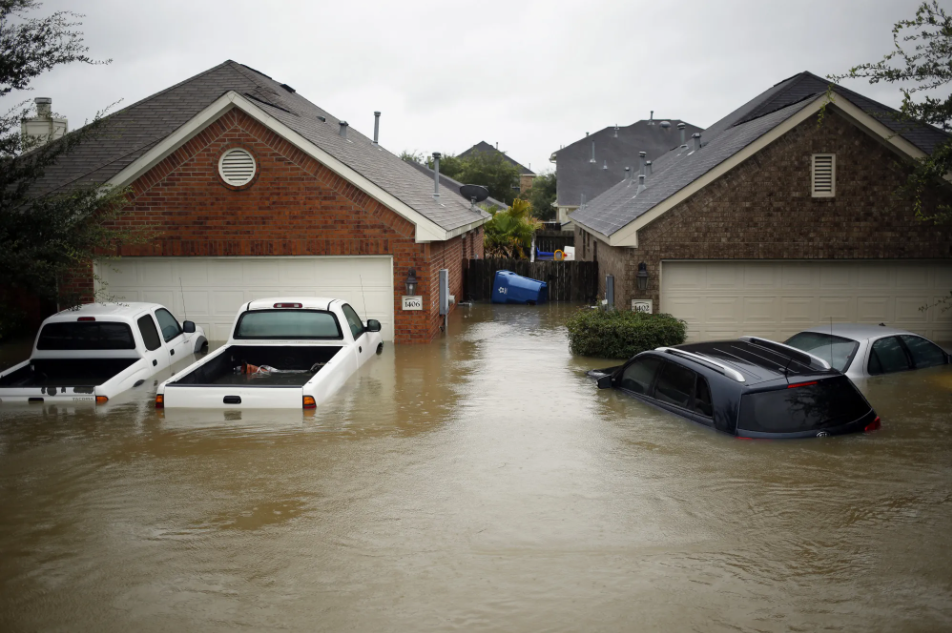
Floods are among the most destructive natural disasters property owners can face. Whether caused by heavy rains, overflowing rivers, or broken pipes, flood damage can leave homes and businesses in complete disarray. It happens fast and often without warning, turning basements into swimming pools and destroying everything in its path—from furniture and appliances to drywall and electrical systems.
At Joe Hensley Public Insurance Adjusters, we understand how overwhelming it can be to deal with the aftermath of a flood. If you’re facing flood damage, or want to be better prepared before disaster strikes, this guide will walk you through everything you need to know—from recognizing damage to filing a Flood Damage Insurance claim and restoring your property.
What Is Flood Damage?
Flood damage refers to the destruction or impairment of property caused by excessive water that enters a home or building. This water can come from a variety of sources, and the effects are often extensive.
Common Sources of Flood Damage Include:
-
Heavy rainfall
-
Hurricanes or tropical storms
-
Overflowing rivers or lakes
-
Broken levees or dams
-
Sewer backup or sump pump failure
-
Burst pipes or plumbing issues
Flood damage isn’t just about water—it often involves contaminated water, structural issues, mold growth, and ruined possessions. The longer the water sits, the more damage it can cause.
The Immediate Impact of Flooding
Flooding can cause serious damage within minutes. Here’s what typically happens:
1. Structural Damage
Walls, floors, and foundations can weaken or crack due to the water’s pressure and saturation. In severe cases, buildings may become unsafe to enter.
2. Electrical Hazards
Floodwaters can short-circuit electrical systems, making outlets, wiring, and appliances dangerous to use. Power should always be shut off during a flood.
3. Contaminated Water
Floodwaters often carry bacteria, sewage, chemicals, and debris. This makes any water damage not only destructive but also a potential health risk.
4. Mold Growth
Mold can start growing within 24 to 48 hours after a flood, especially in warm, humid environments. Left unchecked, it can cause long-term health issues and additional damage to your home.
5. Damage to Belongings
Furniture, electronics, clothing, and sentimental items are often ruined by floodwater. Even after drying, many items may be unsalvageable.
First Steps to Take After Flood Damage
The first few hours after a flood are critical. Here’s what to do:
1. Stay Safe
Before entering your property, ensure it’s safe. Watch for structural damage, electrical hazards, and contaminated water. If in doubt, wait for professionals.
2. Contact Emergency Services if Necessary
If you’re dealing with major flooding, contact local authorities for assistance. Don’t attempt to handle severe flooding on your own.
3. Document Everything
Take photos and videos of all affected areas, including damage to walls, floors, furniture, appliances, and personal items. This documentation is essential for your flood damage insurance claim.
4. Call a Public Insurance Adjuster
Before contacting your insurance company, consider reaching out to a public adjuster like Joe Hensley Public Insurance Adjusters. We work on your behalf—not the insurance company’s—to ensure you receive a fair and complete settlement.
5. Begin Water Removal
Once it’s safe and documented, begin removing standing water using wet/dry vacuums or pumps. Open windows and use fans to help dry the space.
Understanding Flood Damage Insurance
Many property owners assume their standard homeowner’s insurance covers flooding—but it usually doesn’t. That’s why flood damage insurance is so important.
What Is Flood Damage Insurance?
Flood damage insurance is a separate policy (or an added rider) that specifically covers losses resulting from flooding. It’s typically offered through the National Flood Insurance Program (NFIP) or private insurers.
What Does Flood Insurance Cover?
A standard flood insurance policy usually includes:
-
Structural coverage: Walls, floors, plumbing, electrical systems, HVAC units, and built-in appliances.
-
Contents coverage: Furniture, electronics, clothing, and personal belongings.
What Isn’t Covered?
-
Damage from sewer backups (unless added coverage is purchased)
-
Temporary housing costs
-
Currency, precious metals, and important papers
-
Moisture or mold that could have been prevented
It’s crucial to read your policy carefully. If you’re unsure, a public insurance adjuster can explain your coverage in plain language.
The Claim Process: How to Get the Compensation You Deserve
Filing a flood damage insurance claim can feel overwhelming, especially when you’re already dealing with the emotional and financial impact of a disaster. Here’s a simplified overview of the process:
Step 1: Notify Your Insurer
Let your insurance provider know about the flood as soon as possible. They’ll assign an adjuster to your case.
Step 2: Document and Inventory the Damage
Create a detailed list of all damaged property. Include photos, serial numbers, receipts, and approximate values.
Step 3: Work With a Public Adjuster
Public adjusters represent your interests—not the insurance company’s. We help ensure nothing is missed and fight for the compensation you’re entitled to.
Step 4: Get Repair Estimates
You’ll need to get quotes from licensed contractors to support your claim. Make sure they include details about water damage remediation, repairs, and material costs.
Step 5: Negotiate the Settlement
Your public adjuster will help you review the insurance company’s offer and negotiate a better payout if necessary.
The Flood Damage Restoration Process
Once the claim is filed and underway, it’s time to start cleaning and restoring your property.
Step 1: Water Removal
Industrial pumps and vacuums are used to remove standing water.
Step 2: Drying and Dehumidifying
This helps prevent mold and structural damage. High-powered fans and dehumidifiers are essential at this stage.
Step 3: Mold Remediation
If mold is found, it must be professionally remove to prevent health risks.
Step 4: Debris Removal and Cleaning
Damaged drywall, flooring, and insulation are remove. Everything is sanitized to prevent contamination.
Step 5: Repairs and Reconstruction
This may involve rebuilding walls, installing new flooring, replacing electrical systems, and painting.
Step 6: Final Inspection
Once everything is repaire, a final inspection ensures the home or building is safe and up to code.
Preventing Future Flood Damage
While you can’t control the weather, you can reduce your risk of flooding. Here are a few smart strategies:
-
Install a sump pump with battery backup
-
Grade your yard away from the foundation
-
Seal foundation cracks and basement windows
-
Raise electrical outlets and HVAC systems above potential flood levels
- Purchase flood damage insurance, even if you’re not in a high-risk area
Many people only realize they need insurance after the damage is done. Don’t wait—prepare ahead of time.
Why Choose Joe Hensley Public Insurance Adjusters?
Dealing with flood damage is stressful enough—you shouldn’t have to fight with your insurance company on top of that. At Joe Hensley Public Insurance Adjusters, we specialize in helping homeowners and business owners get the full value of their flood damage insurance claims.
We offer:
-
Expert documentation of flood damage
-
Detailed claim preparation
-
Aggressive negotiation to maximize payouts
-
Compassionate support during a difficult time
We work for you—not the insurance company. Let us handle the paperwork, inspections, and back-and-forth so you can focus on getting your life back.
Final Thoughts
Flood damage can turn your world upside down—but with the right help, recovery is possible. The key is to act quickly, document everything, and have a knowledgeable advocate in your corner. If you’ve experienced flood damage, don’t try to navigate the insurance process alone.
Contact Joe Hensley Public Insurance Adjusters today for a free consultation. We’ll help you understand your flood damage insurance coverage and fight for the compensation you deserve.
FAQs
1. Does homeowners insurance cover flood damage?
No. Most standard homeowners insurance policies do not cover flood damage. You’ll need a separate flood insurance policy to be protect.
2. How soon should I file a flood damage claim?
You should report flood damage to your insurer as soon as it’s safe to do so. Quick reporting helps prevent delays in the claim process.
3. Can I clean up flood damage myself?
Small areas may be manageable, but large-scale flood damage should be handle by professionals. Improper cleanup can lead to mold, structural damage, and claim issues.



